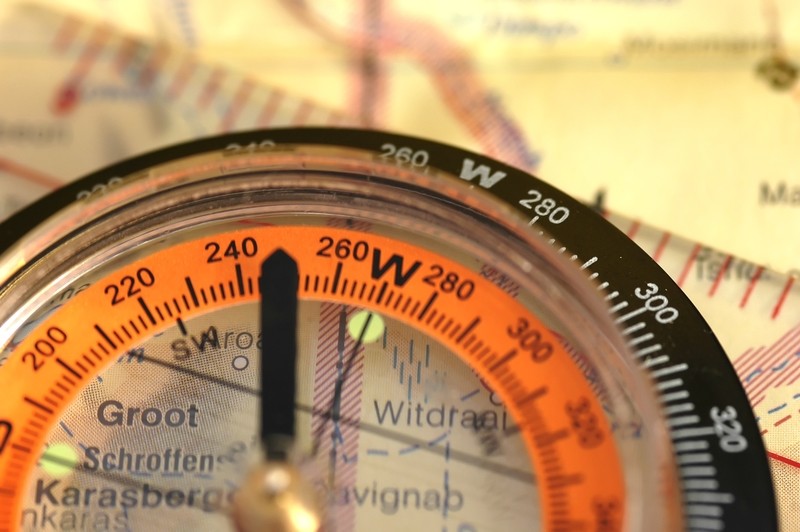Whether traversing a mighty mountain terrain or driving through a difficult desert, the use of the map and compass is far superior to all other forms of navigation. If you lose your GPS charge, it may become your only way to know where you are and where you're going. Learn how to take a map and compass bearing below.
Take a bearing off the map
You want to travel from Peak A to Peak B. Lay the edge of the compass on the line between the two landmarks on the map, with the Direction of Travel arrow pointing from A to B. Turn the housing until the compass’s meridian lines are parallel to the map’s longitude lines. (Make sure the “N” on the housing points toward the top of the map.) The index mark indicates the true bearing—but not exactly the bearing you want to follow. The needle points to magnetic north, not true north, and they’re hundreds of miles apart. Since topographic maps are oriented to true north, you need to resolve this difference, called declination.
The fix: math. Subtract the declination from your compass bearing for west, and add it for east. Of course, everyone forgets this when it counts, so remember this mnemonic: Maps Tell Almost Everything. Translation: Magnetic to True Add East.
Even compared to a functioning GPS, the use of a traditional map and compass will still give a more accurate reading on your location. Fluctuations in satellite service, a solar flare, or government EMP interference (foreign or domestic) could all render your GPS useless, making map and compass the all around king of navigation.
Following these tips are a good way to start, but practicing map and compass use often is the best way to get proficient enough to rely on this method when SHTF.
For more information on how to use a map and compass, go to Backpacker.

Grew up without GPS I’ll be fine
Todd Neyman
Downloaded, printed, and laminated the US Army manual some time ago (have copies too!)
Bob Livengood
It will also shut down 75% of the survey crews out there.